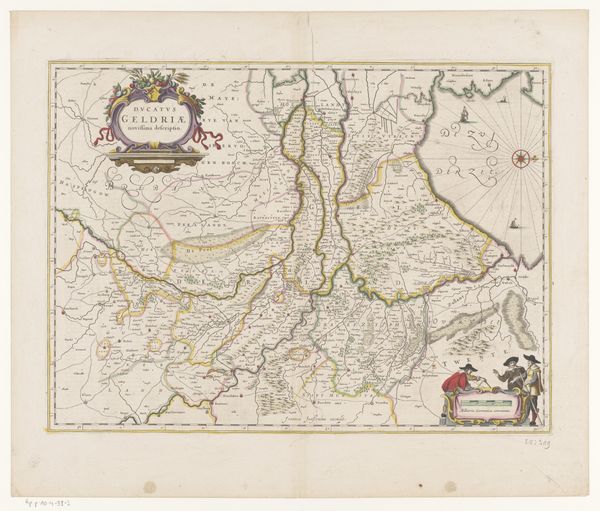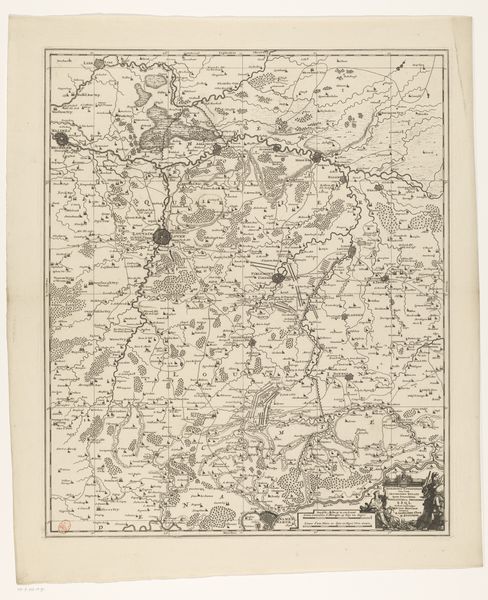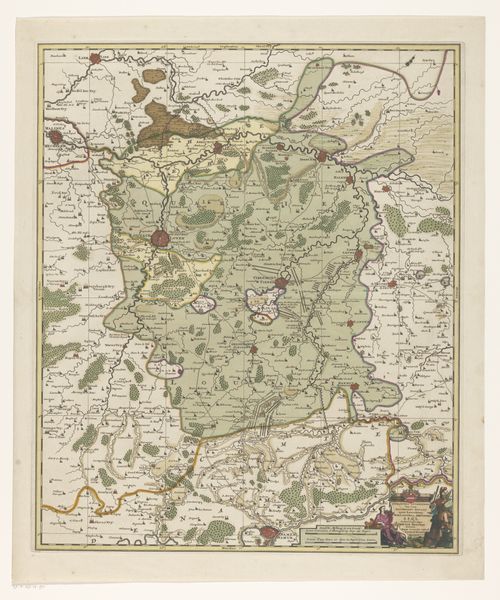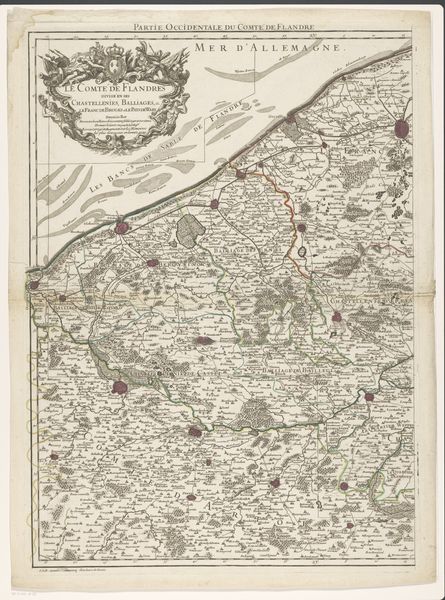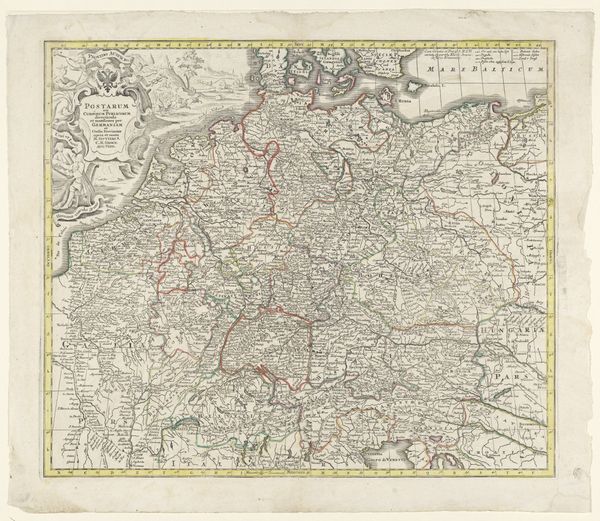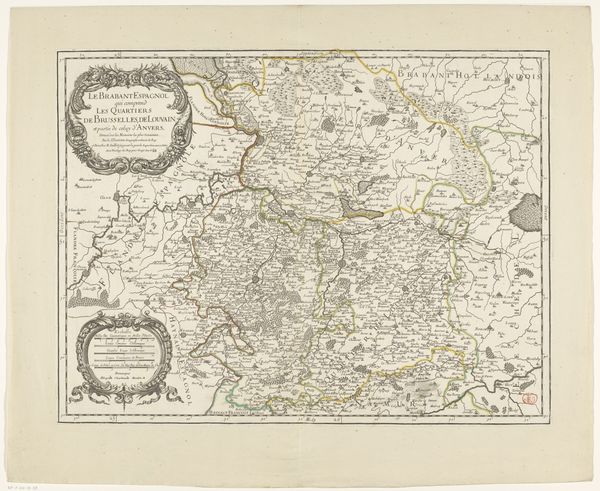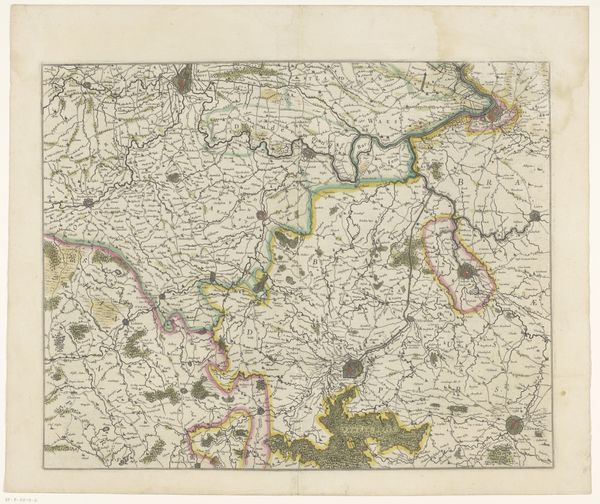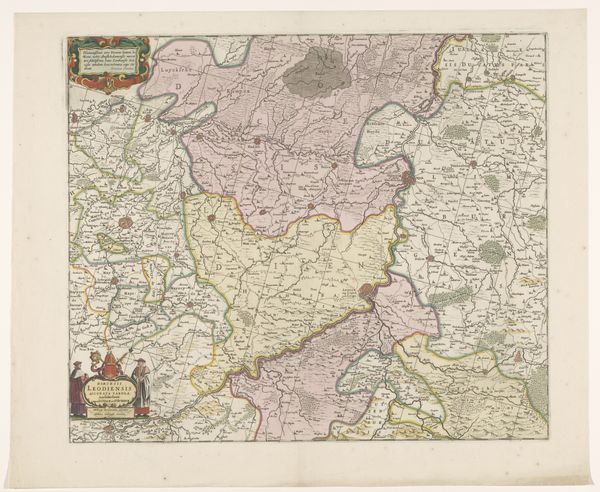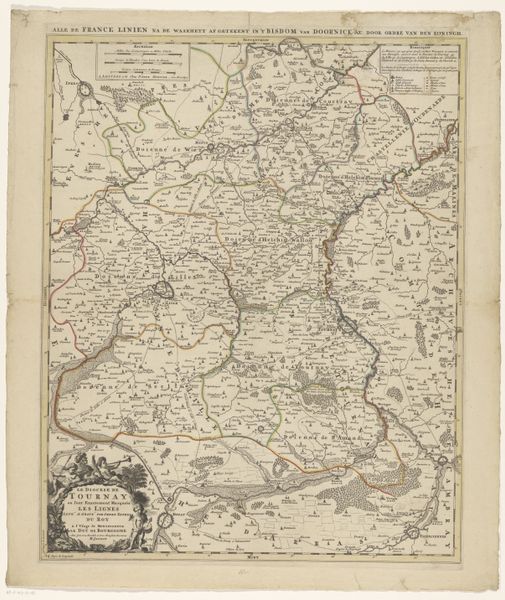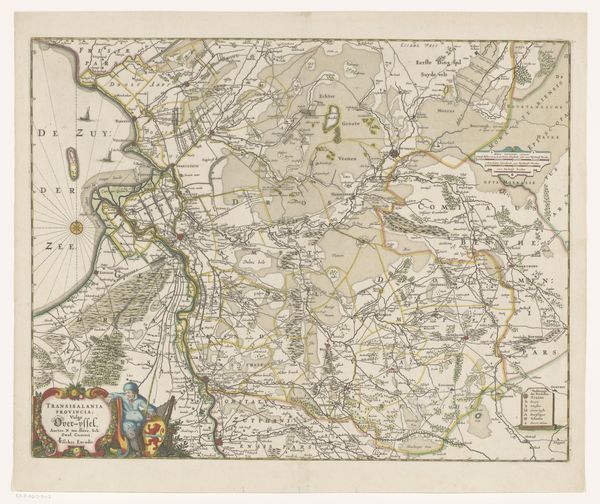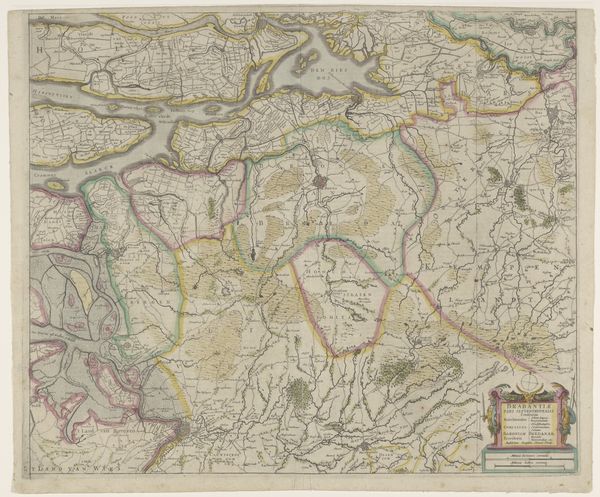
print, etching, engraving
# print
#
etching
#
landscape
#
etching
#
geometric
#
engraving
Dimensions: height 596 mm, width 512 mm
Copyright: Rijks Museum: Open Domain
Curator: Looking at this remarkable piece, we have before us Johannes Condet's "Kaart van Gelderland," a map of Gelderland made after 1757. The work combines etching and engraving techniques on a printed medium. Editor: It has an almost dizzying quality—like staring into a meticulously crafted spiderweb. The precision! I am wondering about the human labor embedded in all of these tiny, repeated markings. Curator: Indeed, cartography in this era carried tremendous symbolic weight, representing not only geographical space but also political power and territorial claims. The map becomes a symbol of dominion. Editor: Thinking about Condet and his contemporaries, one can almost feel the repetitive strain injury building up. There must have been a market for these maps—who purchased them, and how were they consumed? Curator: Such maps were often commissioned by wealthy landowners, government officials, and merchants—symbols of their own power and influence in the region, useful in establishing dominance through visual representation of land control. The symbols denote authority. Editor: Fascinating. Beyond the high-level commissioners and patrons, let's remember the materiality. Paper wasn’t so easy to produce. The production involved harvesting natural resources and countless hands working to manufacture something both functional and, dare I say, artistic? Curator: Absolutely, the creation itself is interwoven with these various threads of social history! The visual order, in its symbolic function, brings an ordered consciousness to its users and the sense of place. Editor: The etching and engraving make it replicable. Mass production leads to broader awareness of spatial knowledge... which could certainly affect resource exploitation, political maneuvers, or social engineering? This is far from just a decorative object. Curator: Precisely. So much more than just geographical data, it is the representation and intent that infuses its meaning, touching upon power and identity. Editor: Thinking of the etcher, engraver, paper presser, map buyer... There are entire labor systems folded into this piece. A deceptively tranquil surface hiding so much complex labor beneath! Curator: This intricate 'Kaart van Gelderland' takes us into a place rich with material and symbolic meaning to reflect on its purpose and the powers it represented. Editor: Exactly. Condet's map provides a rich nexus of visual symbols and real work processes that make up a fascinating window to its world.
Comments
No comments
Be the first to comment and join the conversation on the ultimate creative platform.

